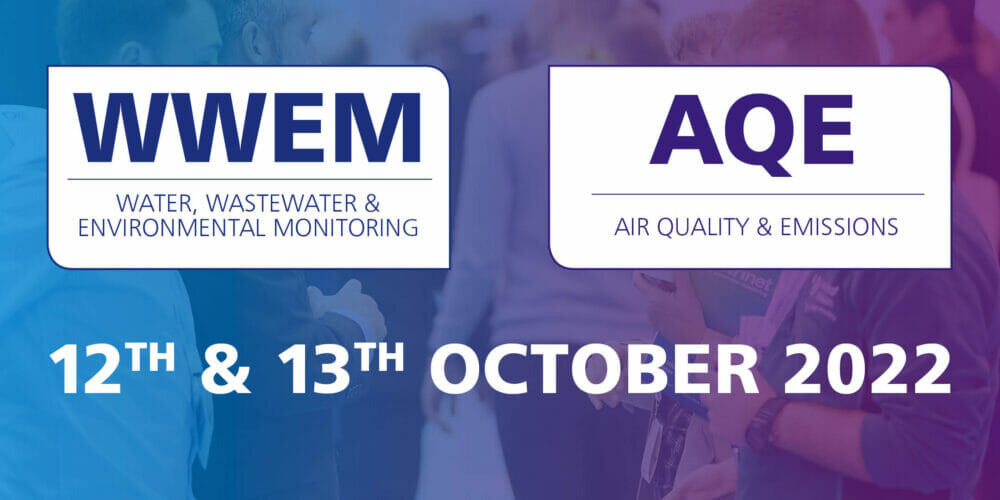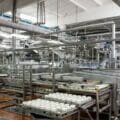The organisers of AQE 2022 are delighted to announce that this year’s event will take place live at the Telford International Centre on 12th and 13th October. In common with previous AQE events, visitors will be provided with a comprehensive package of training and development presentations on the latest regulations, standards, test methods and monitoring technologies involved with the measurement of air quality and emissions to air.
Both AQE and the co-located WWEM (Water, Wastewater & Environmental Monitoring) programmes are supported by a comprehensive range of seminars, and two major international exhibitions featuring most of the world’s leading suppliers of environmental monitoring equipment, analytical testing instrumentation and support services.
Registration for both AQE and WWEM is free and available from www.ilmexhibitions.com. By registering prior to the event, visitors will be entitled to free parking, free refreshments and complementary access to both events.
The two main components of AQE are air quality (indoor and outdoor), and industrial emissions. The air quality programme has been configured by Jim Mills, a well-known figure in the sector and now and independent consultant with Scotswolds Ltd. Presentation titles, abstracts and author details are published on the AQE website, but the main themes are described below.
Speakers from government/regulators will summarise the implications of the Environment Act 2021 with regard to ambient air quality, explaining the targets and timelines that have been specified. For example, the Act establishes a legally binding duty to bring forward at least two new air quality targets in secondary legislation by 31 October 2022. The proposed targets relate to PM2.5 with a 2040 objective, which is a concern for many stakeholders. These issues will be addressed by subsequent speakers from philanthropic organisations which are engaged in air quality matters by funding research, undertaking monitoring and other initiatives, whilst also lobbying policy makers, seeking to improve environmental legislation and hold the government to account.
There will also be presentations by the UK’s Air Quality Expert Group (AQEG), which provides advice to the UK government, and from NPL, the UK’s National Physical Laboratory, who will outline the latest work on the standards and methods that underpin air quality science.
A speaker from the QUANT programme will describe the findings of a real-world open and traceable assessment of low-cost sensors and sensor networks, and their calibration, and others will focus on the measurement of Black Carbon, and also how CO2 measurements can contribute to source attribution and to the calculation of emissions indices. A potentially game-changing project will also be described, in which air quality monitoring networks are being hosted by existing cellular communications network infrastructure.
In the past, there have been concerns that monitoring and modelling have been regarded as almost separate methods for the assessment of air pollution, but speakers will outline the case for greater integration. Monitoring should be used to calibrate and verify modelling predictions, and recent advances in low-cost sensors mean that greater spatial density of monitors can be deployed to enhance the reliability and granularity of modelling predictions.
In the general media and in the minds of the public, air quality and climate change are frequently represented as the same environmental problem. However, not all air pollutants have a greenhouse gas effect, and greenhouse gases are not usually toxic. Nevertheless, local air quality strategy is often separate to local climate change strategy. This might be because they may have separate budgets in both central government and local authorities, but this session will explain why both strategies should be combined. For local authorities, the greatest impacts on both air quality and climate change come from planning and development, so it is vital that these issues are addressed in the planning process.
While it is important to reduce outdoor pollution, it is even more important to protect the quality of indoor air. When people meet indoors, carbon dioxide levels increase, and it is well known that this can cause drowsiness and harm the performance of office workers and schoolchildren for example. However, the Covid pandemic further highlighted the importance of ventilation because the concentration of airborne infectious aerosols also increases in populated rooms with inadequate ventilation. Speakers will therefore describe a government pilot study in which CO2 and particulate sensors are being used to monitor ventilation in schools.
The regulations, standards and methods relating to the measurement of industrial emissions have been a key feature of all AQE events and the MCERTS events before that. AQE 2022 will continue to address this core issue with an additional focus on the role of monitoring in the fight against climate change.
The Environment Agency will set the scene with a presentation on relevant regulations, after which the Environmental Services Association (ESA) will outline a strategy for the recycling and waste sector to meet Net Zero. Both of these presentations will be given with particular reference to the monitoring requirements. One of the speakers will also address the challenges of monitoring biogenic and fossil carbon emissions, because global initiatives are under way to reduce the use of fossil fuels, which has resulted in an increase in the use of fuels of biogenic origin as a replacement.
Carbon capture represents an important opportunity to lower carbon emissions; however, amine solvents are used in some carbon capture processes, which can react to form new compounds within the plant’s emissions. Rod Robinson from NPL will therefore summarise current research projects and the requirements for monitoring amine emissions. There will also be presentations on continuous sampling, with help and guidance from an operator’s perspective.
The second day of the AQE emissions monitoring programme will focus on data acquisition, handling and reporting. The final session will be a panel discussion, addressing all or any of the subjects covered by the emissions monitoring programme.
Summarising the plans for these two events, Marcus Pattison says: “It is tremendously exciting to be able to run a physical event again. This year the volume of available content is incredible – I would urge everyone to plan their trip very carefully so that they can jump in and out of their sessions of most relevance, to maximise the benefit of their visit.

“Can I also ask everyone to REGISTER NOW at www.ilmexhibitions.com – it’s free and only takes a few seconds. Registered visitors will be entitled to free parking, free entry, free lunch and refreshments, but most importantly, they will be provided with free access to all of the presentations (both AQE and WWEM), both exhibitions and all of the seminars and workshops that will take place!
“Telford benefits from easy access and the International Centre has hotels on site, so that visitors can stay for both days. So, as you can probably tell, we are really excited about this year’s events and we can’t wait to see everyone in Telford!”








